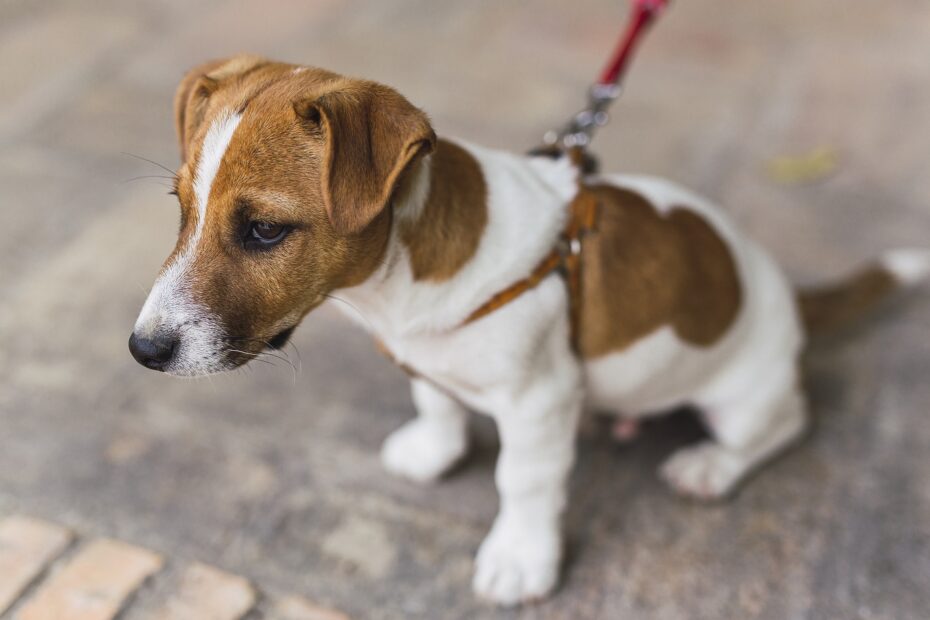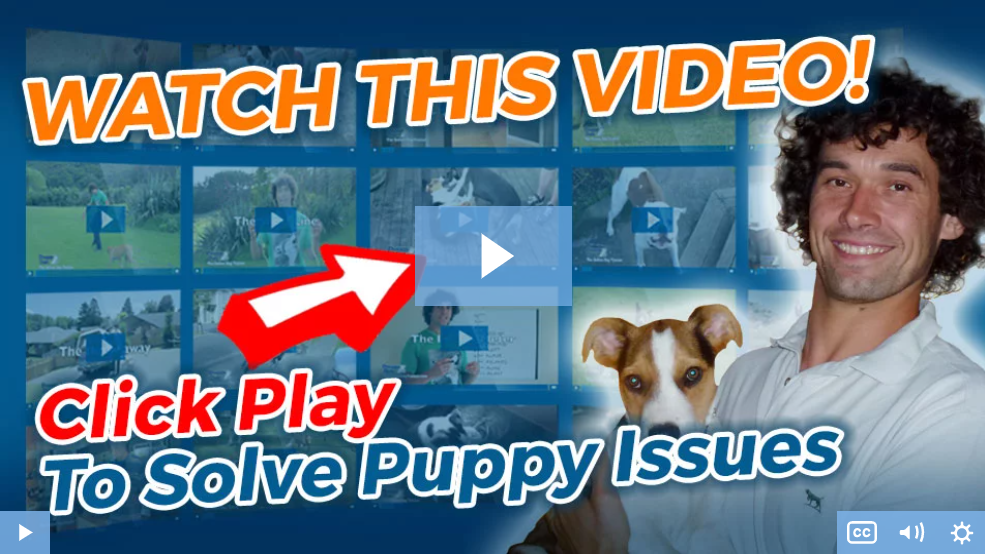If your puppy hates the leash, they’re by no means the only one.
Puppies love most things about life, but the leash ranks pretty low on their list of pleasures. Which is understandable.
After gambling around freely for weeks, suddenly, all their lovely freedom gets taken away. They can’t run where they want, do what they please, or jump when they choose. And it’s all because of that darn leash.
A leash might keep your pup safe, but do you think they give a hoot? Nope.
To a puppy, a leash is nothing but a bore. It’s the thing standing between them and the open road, the brake to their accelerator.
Basically, it’s a nuisance. If there’s a way to avoid it, you can bet your life they’ll find it.
None of this is a giving, of course. Not all puppies hate the leash. Some are completely ambivalent about it. To them, it makes no difference whether it’s on or off.
So, what’s the secret? Why are some puppies perfectly happy to walk on a leash while others slam on the brakes the moment it appears?
Actually, there is no secret. Puppies might hate the leash for many reasons, but most of those reasons are easy enough to explain.
You might need to dig around in their brain for a bit, but providing you speak a little canine, it shouldn’t take you long to figure out what’s behind your pup’s leash refusal.
Once you find the reason, you can start working on the solution…. and believe me, there is a solution.
All that frustration you’re feeling at the moment isn’t going to last forever. Leash refusal isn’t inevitable, and it’s certainly not something you need to put up with.
With the right technique (and a healthy amount of patience), you’ll soon have your pup walking on the leash like a pro.
The first step? Teaching them how to reign in all those puppy-dog emotions and exercise a little control. A puppy with a calm, controlled approach to life will take leash training in its stride.
Introducing your puppy to the concept of calm might sound like mission impossible, but it doesn’t need to be.
Especially if you watch the video below from the Online Dog Trainer, Dan Abdelnoor.
Dan’s 5 step-by-step calming exercises have been specially designed to teach your dog to calm down and control their runaway emotions. Once you master the exercises, you should notice a marked improvement in your pup’s trainability and focus.
Here’s the link to take a look: 5 Step-By-Step Calming Exercises To Quickly Help Your Puppy Love The Leash…
(video will open in new window)
Why Your Puppy Hates the Leash?
Puppies can learn to hate the leash for no end of reasons. Tempting though it is to jump straight in with a fix. It’s worth figuring out the reason for their leash refusal first.
After all, not all problems can be fixed in the same way. Some solutions might be universal (remember those 5 step-by-step calming exercises? That’s one of them), but some problems require a multi-pronged attack.
By finding out what’s behind your pup’s leash aversion, you’ll be better positioned to match the solution to the problem.
Take a moment to consider some of the following common reasons for leash refusal.
Do any trigger a light bulb moment?
Unfamiliarity
Most puppies love the adventure of the new. They love finding out new things, discovering new ways to have fun.
But the leash is one type of new experience they’d happily do without.
The first time it goes on, your puppy is introduced to a new pressure around its neck – a pressure that’s in no way welcome.
Suddenly, they’re expected to kiss goodbye to the freedom they’ve always had. And they don’t always get it.
- Why can’t they do what they want anymore?
- And what exactly is this thing around their neck?
- Even more importantly, why do you keep pulling them around with it?
Basically, they’re confused. The more you try to pull and coax them, the more confused they’re going to get.
Negative Associations
Don’t think a pup’s age is a barrier to some unhappy memories. No matter how young a dog is, they can have a stockpile of bad experiences to draw on, even if you’re not aware of them.
If your pup has had any bad experiences on the leash, they’re likely to harbor a grudge against it.
Maybe they remember wearing it to the vets. Perhaps they got scared by another dog on a walk. Regardless of what they remember, if it’s bad and if it’s got any association with the leash, it’s only natural that they’ll do what they can to avoid it.
Fear
If your pup hasn’t been leash trained properly, the sight, smell, and feel of the leash could be frightening.
Remember, your dog doesn’t understand what the leash is. They’ve got no idea that it’s there to ensure their safety.
To them, it’s something strange, unfamiliar, and, in some cases, very, very nerve-wracking.
Uncomfortable Leash
Sometimes, the explanation for a problem is more obvious than we think.
Think about it. If a pair of shoes made your feet feel like they were encased in lead, would you wear them?
Or if you had no choice but to wear them, would you be happy about it…?
…No?
Now imagine how your pup feels when you strap them into a cumbersome, heavy collar and a leash that feels like an anchor around their neck.
You might think you’re doing the best for your pup by buying the biggest, most heavy-duty leash you can find. In reality, you’re just making them uncomfortable.
Frustration
Until now, your puppy has been able to go their own way and do their own thing. The leash puts an end to that. If you think that’s something they’re going to put up with gladly, prepare for a nasty surprise.
A pup with boundless energy wants to run and jump and burn off some steam. The leash doesn’t necessarily stop them from having fun, but it does mean they’re going to have to get used to having fun in a more controlled way.
Until they accept that, you can expect resistance.
Related Post: 7 Reasons Your Puppy Chews The Leash And What To Do About It
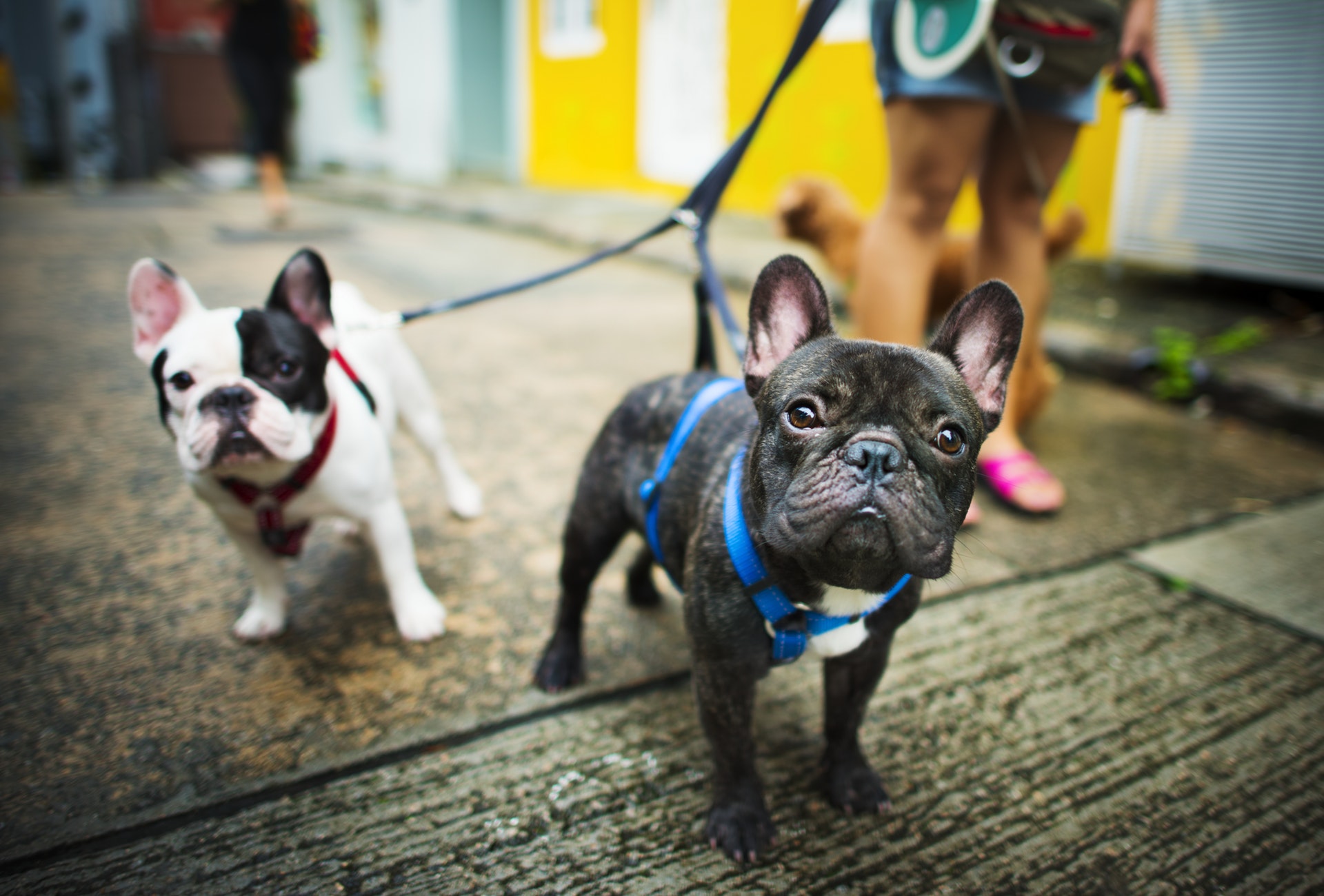
How to Get Your Puppy to Love the Leash
Getting your pup to stop hating the leash and start loving it isn’t going to happen overnight. But persevere.
With time, patience, and the right technique, you can put an end to the frustration and turn walks into the pleasure they should be.
First things first, get acquainted with the 5 step-by-step calming exercises I mentioned earlier. You might not think a few exercises can make a huge difference, but trust me, they can.
As soon as you introduce the exercises into your routine, you’ll notice a marked improvement in your pup’s temperament and willingness to learn. Not to mention their ability to stay calm when the leash comes out.
If your training has been nothing more than a huge headache so far, these are the exercises to change things.
Once you’ve worked the exercises into your routine, go on the offensive with some of the following strategies.
Encourage Positive Associations
If your puppy’s anxiety or distrust of the leash runs deep, you’ll need to dial things back and reintroduce them to it all over again.
For now, don’t worry about getting them to walk on the leash politely. Before you get to that point, you’ll need to address any negative associations they have with the leash and get them comfortable wearing it.
Before you start, make sure your pup is calm and controlled by running through the 5 calming exercises. If they’re tense or excited, you’re not going to get anywhere fast.
Once your pup is calm and relaxed, get them to sit. Keeping your movements slow and calm, approach their head with your hands, reassuring them softly as you do.
If they stay still and don’t move away, reward them with a treat. Keep practicing – the idea is to get your pup to associate your approaching hands with a nice reward.
Once they’re completely comfortable with the process, introduce the collar. Using the same method as before, keep practicing until you can slip the collar on without them moving away.
Use plenty of rewards and praise to smooth the way. Depending on just how nervous your pup is about the collar, you might experience some setbacks along the way.
Don’t worry if you do, but don’t give up either. With enough time and practice, they’ll eventually become fully comfortable with wearing the collar.
Once they are, you should find they’re happy to accept wearing the leash for walks.
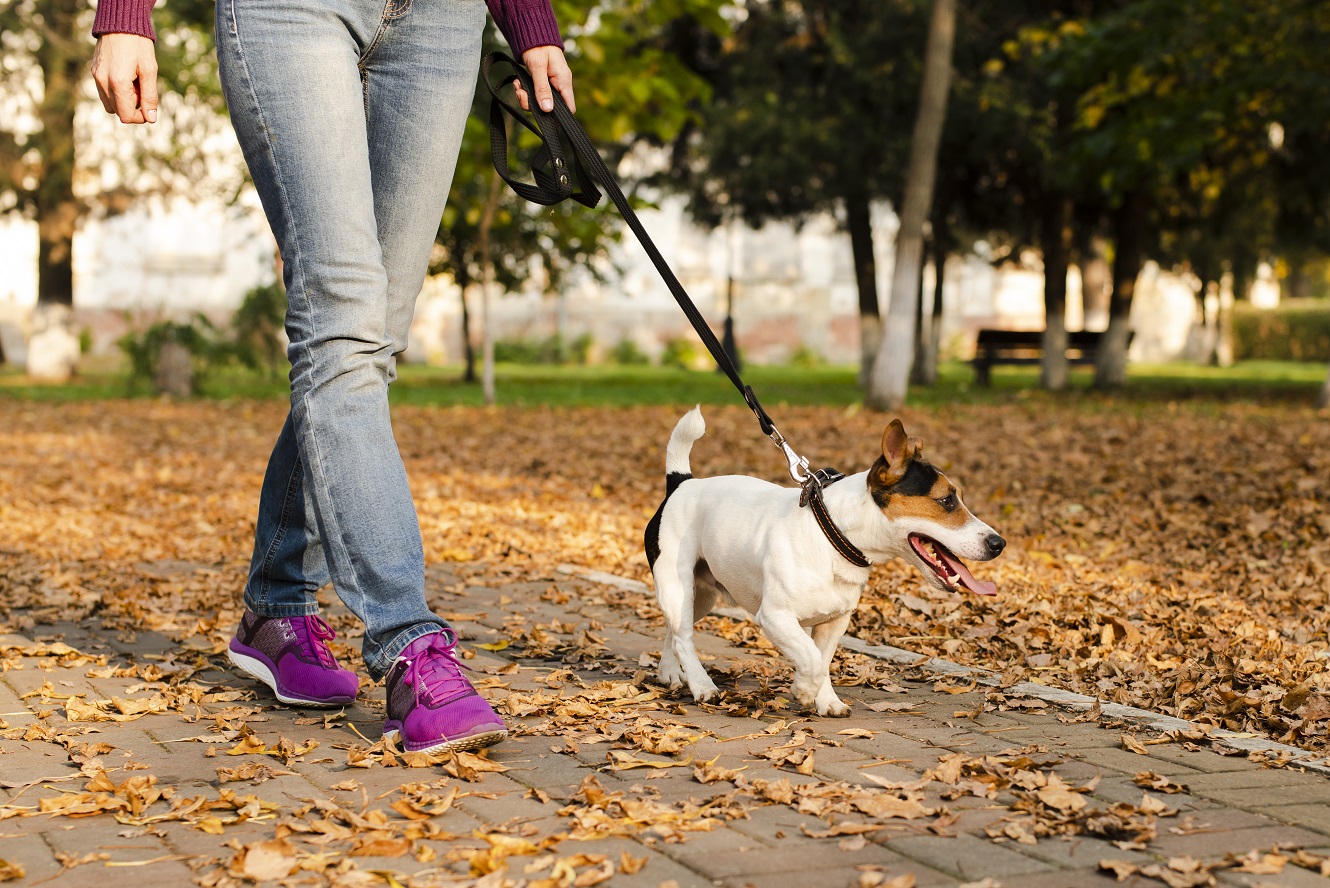
Build Familiarity
The sensation of the leash can take a bit of getting used to.
If your pup slams on the brakes each time the leash goes on, you’ll need to work on getting them accustomed to the sensation.
Start by simply attaching the leash to their collar and letting them walk around the house with it. As there’s a chance the leash could get caught on something, make sure you’re on hand to supervise.
Once they’re happy enough to wander around the house wearing the leash, you can move to the next step.
Pick up the end of the leash. Keep your arm relaxed and avoid applying any tension to the leash.
Call your puppy to you. Once they reach you, reward them with a tasty treat and plenty of praise.
Keep practicing. Over time, work on increasing the distance between you and your pup. Once they’re happily trotting by your side without any need for coaxing, pick up the leash and head outside.
Continue to use plenty of praise and treats on walks to develop positive associations with the leash.
Counter Their Fears
If a puppy experiences something frightening on a walk, it’s natural for them to attach their fears to the leash and refuse to move an inch with it on.
Although fears can quickly become entrenched, the right technique can help your pup overcome their anxieties.
The trick is to start small. Don’t expect your dog to go from nervous to confident overnight.
Desensitizing a pup to certain triggers is a process, not a quick fix. And any attempts to rush the process could end up doing more harm than good.
Start by attaching the leash and taking them outside during a quiet time. The less traffic and people around, the better. And be sure to have a big bag of treats to hand.
Keep a close eye on your pup. The moment they do something they’d do naturally on a walk (this could be something as small as looking up or down the street), reward them with gentle praise and a treat.
Keep practicing. It may take time, but with patience and plenty of positive reinforcement, your pup should eventually start walking naturally.
While you’re working on the process, keep practicing those 5 step-by-step calming exercises I mentioned earlier.
For puppies with fears or anxieties, the emotional control exercises discussed can make a huge difference.
Swap the Leash
We all want to keep our dogs safe, but weighing them down with the heaviest piece of kit we can find isn’t necessarily the right way to go about it.
Swap your old, heavy leash for the most lightweight, flexible option you can find that’s suitable for your dog’s size and breed.
You might be surprised at just how much happier they’ll be to walk on the leash when it’s not weighing down their neck like an anchor.
Change Your Tactics
Imagine the scenario…
You’re at the dog park, and your pup is having a whale of a time. They’re making friends, checking out the sights, and gobbling up the smells. Then you come along with the leash and put an end to the fun.
If you think they’re going to take kindly to the idea, you’ve clearly underestimated just how stubborn pups can be.
But we all have to do things we don’t want to from time to time, puppies included. Forcing the issue won’t help, but changing your tactics just might.
Next time your pup digs their heel into the ground and refuses to leave what they’re doing, turn your back on them.
As ploys go, it’s not the most obvious. But the thing is, dogs love attention. Whether it’s positive or negative, they don’t really care. Providing it’s aimed at them, they’re happy.
Coaxing, wielding, or even scolding a pup who’s having too much fun where they are to leave won’t work. All it does is reinforce their behavior through attention.
But if you ignore them. Pretty soon, they’ll get too distracted by your behavior to carry on with theirs.
Keep an eye peeled for any hint of movement. The second they show signs of leaving what they’re doing, mark the action with a verbal cue (‘good boy,’ etc.), and toss a treat just in front of them.
Continue to mark their progress with treats until you’re walking at a steady pace.
Related Post: How To Quickly Stop Your Puppy Pulling On The Leash
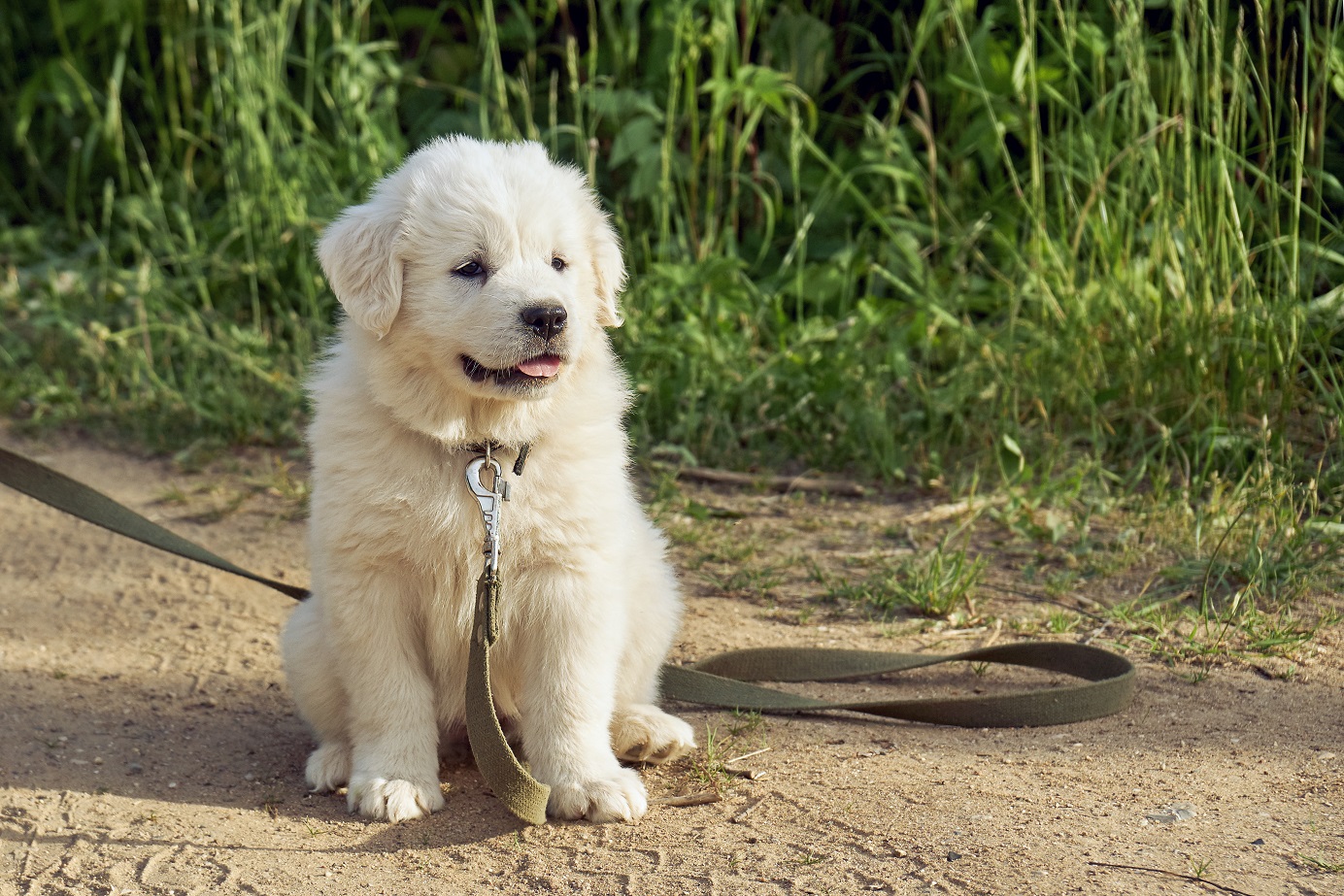
Final Thoughts
Regardless of what’s motivating your pup’s aversion to the leash, teaching them how to react calmly to its appearance can make a big difference.
Like it or not, the leash is going to be a big part of their life. With time, patience, and one or two of the solutions I’ve mentioned above (not to mention those all-important 5 step-by-step calming exercises), you can help your pup overcome their leash aversion and start enjoying walks the way they should.
